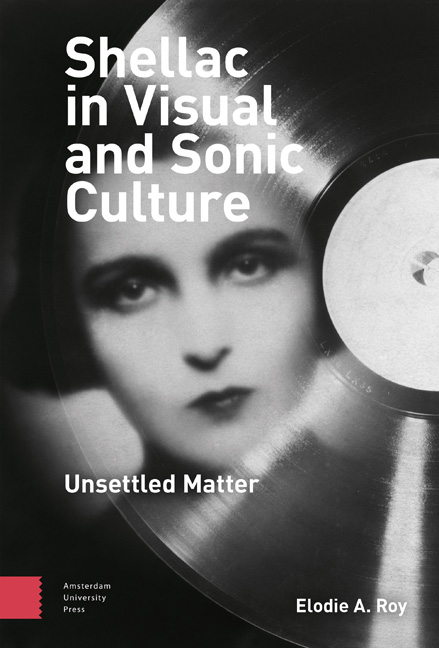Book contents
- Frontmatter
- Contents
- List of illustrations
- Acknowledgements
- Introduction: From material culture to the materials of culture
- 1 Sheen: Early stories and circulation of shellac
- 2 Crackle: Assembling the record
- 3 Mirrors: Phono-fetishism and intersensory visions
- 4 Detonations: Shellac at war
- 5 Shards: Waste, obsolescence, and contemporary remediations
- Conclusion: Sonic sculptures
- Bibliography
- Index
5 - Shards: Waste, obsolescence, and contemporary remediations
Published online by Cambridge University Press: 17 February 2024
- Frontmatter
- Contents
- List of illustrations
- Acknowledgements
- Introduction: From material culture to the materials of culture
- 1 Sheen: Early stories and circulation of shellac
- 2 Crackle: Assembling the record
- 3 Mirrors: Phono-fetishism and intersensory visions
- 4 Detonations: Shellac at war
- 5 Shards: Waste, obsolescence, and contemporary remediations
- Conclusion: Sonic sculptures
- Bibliography
- Index
Summary
Abstract:
Chapter 5 attends to the recurrence and persistence of shellac in contemporary art and design, describing its visual and material remediation by contemporary practitioners based in Germany, France, Britain and the US. Their works are notably discussed in relation to the Broken Music exhibition (1988–1989), first shown in Berlin, which marked a critical turning point in what could be called ‘gramophone art’. Throughout, the chapter discusses the importance of embodied modes of knowing for the exploration of materiality – and revives François Dagognet's invigorating plea for an ontology of (neglected) materials.
Keywords: contemporary art, design, phonography, waste, recycling, Shellac
This last chapter retraces some of the afterlives of shellac – and gramophone records – in the contemporary era, at a time when it has fallen into obsolescence as a media material but continues to be an important symbolic resource or matrix in sound and visual art. It discusses the works of contemporary artists (or, to use a helpful German coinage, ‘research artists’) and designers who have explicitly and systematically engaged with shellac through the knowledge of its deep media-material history – while moving beyond the rigid confines of historical retelling. In doing so, the chapter also highlights what multidimensional and intersensory modes of thinking may contribute to our understanding of media – in other words, it acts as a supplement to what came before, allowing us to ‘actualise’ the history of the material. This is not to say, as already noted in Chapter 4 in relation to the theses of Catherine Malabou and Esther Leslie, that a material excavation can ever be equated with a strict ‘return’ to previous historical stratas.2 Despite the effective endurance of materials, no repetition is ever possible: the previous chapters have insisted on the plasticity and transformational potentials of shellac to illuminate, in turn, the mutability and fragility of cultural formations themselves. In what follows, I would like to argue that contemporary sound and visual artists (not unlike their interwar predecessors discussed in Chapter 3) fashion valuable ways of hearing, thinking about and looking at the surfaces and substrates of the contemporary era. Their close, intimate involvement with the materiality of objects and archives may allow them to coin in turn a more expansive dialogue with the world than conventional academic researchers may feel authorised to form. This work is without end.
- Type
- Chapter
- Information
- Shellac in Visual and Sonic CultureUnsettled Matter, pp. 169 - 200Publisher: Amsterdam University PressPrint publication year: 2023



